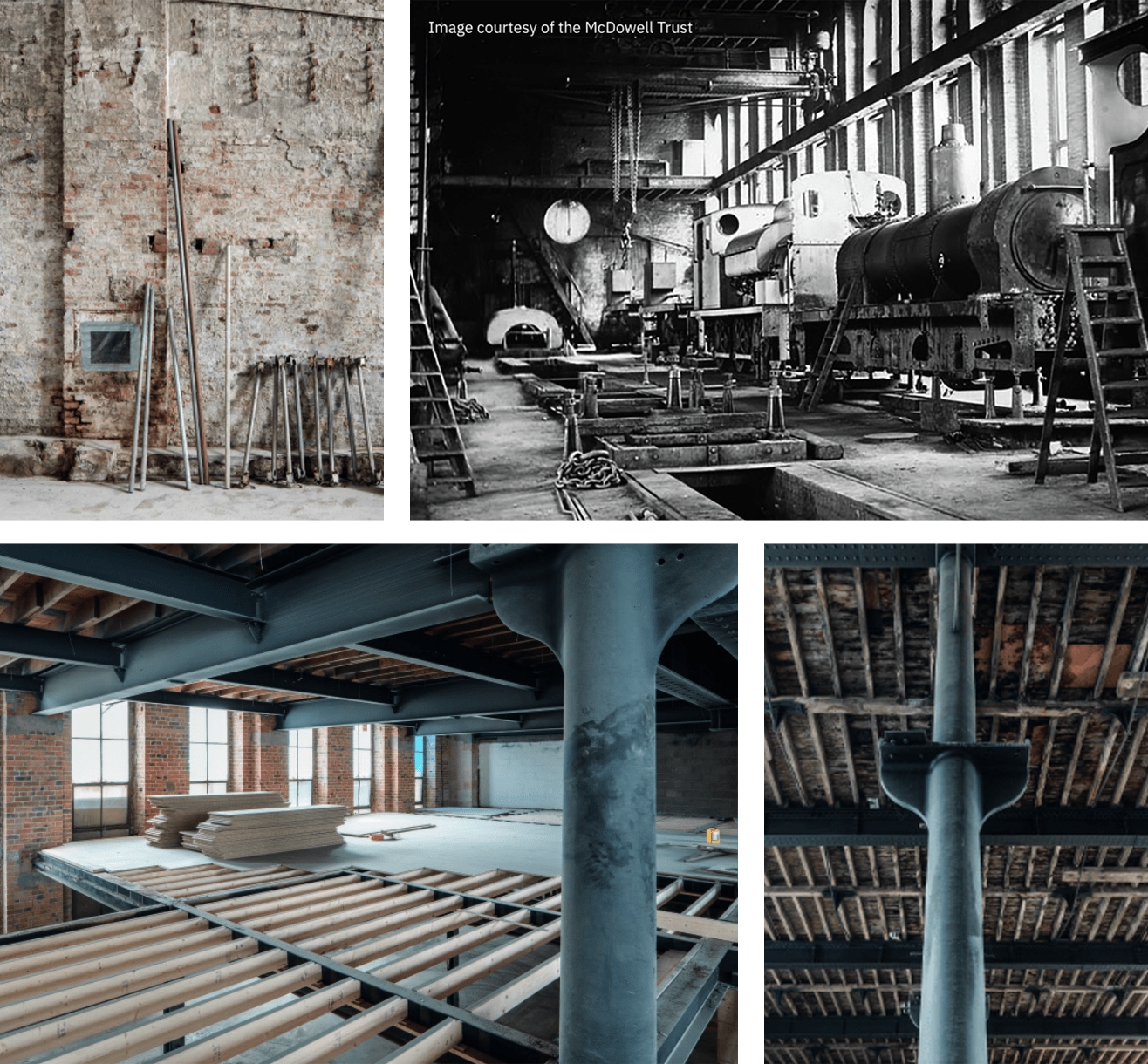History & Renovation
Why is the Stephenson Quarter, and the remaining listed buildings on this site, such a significant part of British and Global Railway heritage?
Here’s a brief history….
Coal from Newcastle and the wider region provided the capital to develop railways in the North East, and it was George
and Robert Stephenson from Tyneside who developed locomotives to the state where they became the driving force for the Industrial Revolution and changed forever how people travelled. The company and its successors supplied locomotives to railways throughout the world over a period of almost 140 years.
His innovative locomotive designs revolutionised the railways, accelerated the Industrial Revolution, and put Newcastle on the map as a centre for innovation and creativity. It is that legacy that The Pattern Shop and the wider development will honour.
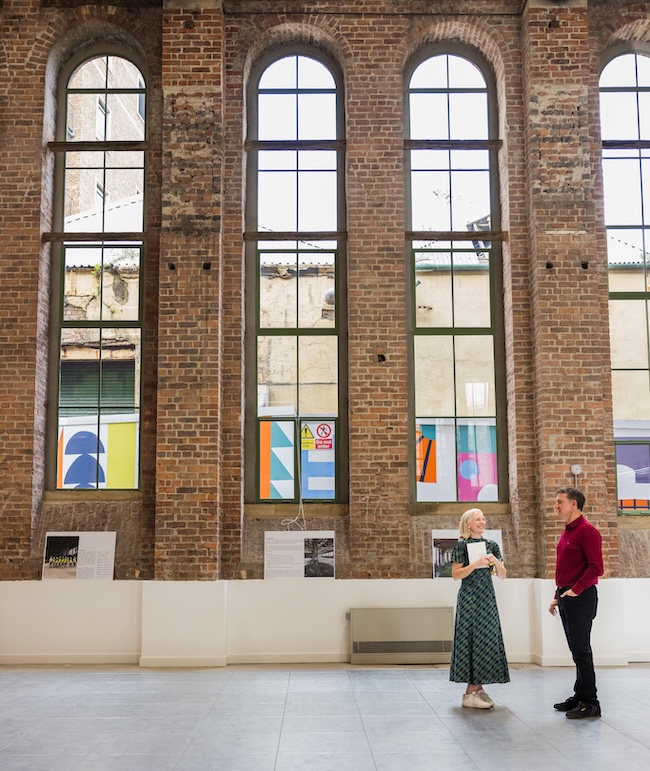
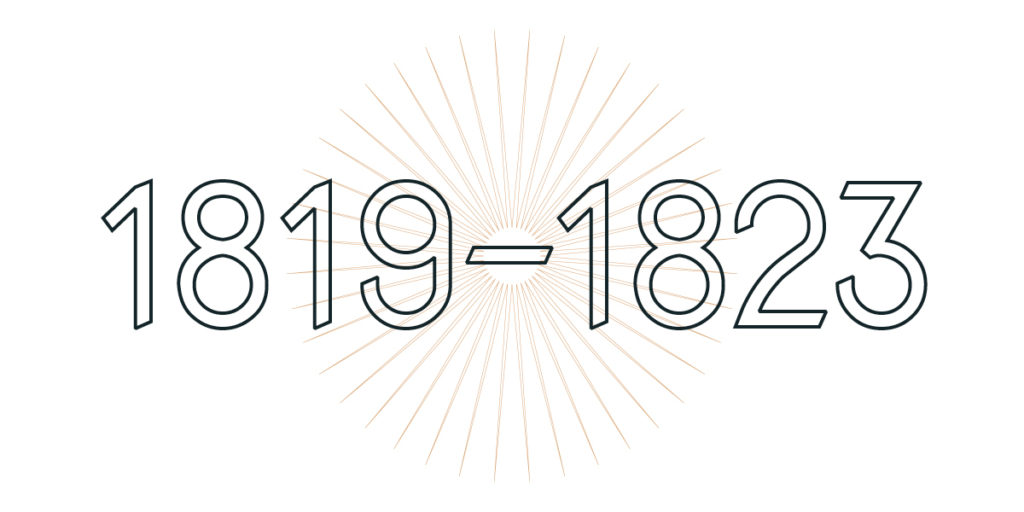
- In 1819 Robert joined his father at Killingworth Colliery, as an apprentice. George had gained the reputation as the expert for railways in the Northeast and was commissioned to design a seven-mile railway to carry coal from a new colliery at Hetton to the River Wear near Sunderland.
- In 1821 construction started and Robert, just eighteen, supervised building the locomotives at Killingworth. This was the first railway in the world designed to use steam locomotives.
- Later in 1821, George Stephenson became Engineer for the design and construction of the Stockton & Darlington Railway.
- On 23rd June 1823, Edward Pease, George Stephenson, Michael Longridge the manager of the Bedlington Ironworks, and Robert formed a partnership to manufacture steam engines. It was the first company in the world to specialise in locomotive production.
- In 1825 the first Stockton &Darlington Railway locomotive Locomotion, driven by George Stephenson, hauled 34 waggons plus the first railway carriage Experiment from Shildon to Darlington. Some of the wagons were loaded with coal with passengers on top, some with sacks of flour and passengers amongst them, and others with workmen and strangers.
- The L&MR enabling Act passed in 1826. George Stephenson had been appointed Engineer to perform the massive task of preparing the detailed design for the railway and organising construction of the world’s first inter-city railway. To be successful this railway would need something better than the cumbersome colliery locomotives of the past.
- After arriving home in November 1827 from working in Columbia and America, Robert Stephenson made the Newcastle factory his headquarters for the next five years and implemented significant improvements. Conditions were right for Robert to press forward with his ambition of producing fast, reliable and economic locomotives.


- The L&MR holds a locomotive trial at Rainhill in October 1829 with a prize for ‘The Most Improved Locomotive Engine’ – the 1829 Trials drew enormous public interest, with the proceedings being described by contemporary journalists in terms of a national horse race. Similar facilities including tents for the ladies, a band to entertain and stands for spectators were provided. Of the many applicants for the competition there were only three real contestants: Rocket, Novelty built by Braithwaite & Ericsson, and Sans Pareil by Timothy Hackworth of Shildon. Both Novelty and Sans Pareil failed to complete the Trials. Rocket was not only the clear winner. It exceeded all expectations when George Stephenson ran Rocket on its own across the Rainhill Level and back again at what was then the astonishing speed of 35mph! Without doubt It was superior to any other locomotive at the time. After the trials, the L&MR ordered more locos from RS&Co to be built on the principle of Rocket.
- The Planet of 1830 incorporated the principal features that were not only used on several of the world’s earliest mainline railways but in main line locomotives for almost 150 years. The RS&Co works were now attracting international interest with visitors not only from the USA but also Germany and France, resulting in locomotives being exported to all those countries and the works were the Pride of Newcastle.
- During the late 1830’s the factory expanded in the Newcastle Forth Street/South Street area to meet increasing demand for locomotives. By now the business was employing 400 workers and in the 1840’s RS&Co shipped many loco’s to America.
- By 1846 Railway mania was at its height and RS&Co had 224 engines on order. The firm’s national and worldwide sales in the order books showed that where there were railways, very few had no locomotives from this builder. To meet demand it was necessary to enlarge the factory again to the west of Forth Street, known as ‘The West Factory’. Even with this increase in capacity some orders had to be subcontracted out.
- Throughout the mania years, 1844 to 1848, he was heavily involved with Parliamentary work required to authorise many new railways being promoted. Some of these required immense commitment into the 1850’s when he was appointed Chief Engineer with responsibility for their design and construction. Robert was Chief Engineer for the Newcastle and Berwick Railway. This railway, authorised in 1845, included three major projects in their own right: the unique Newcastle High Level Bridge, Newcastle Central Station and the magnificent 28-span viaduct across the River Tweed at Berwick.
- 1848 was a difficult year for RS&Co. George Stephenson died that year and the country went into recession again. The French revolution and turbulence in other European countries reduced demand for locomotives but his High Level Bridge was completed in 1849. Newcastle Central station and the Royal Border Bridge opened in 1850.
- Note – The first passenger train crossed the completed High Leven Bridge on 15 August 1849. Queen Victoria formally inaugurated this bridge passing over it by train on 28 September 1849.
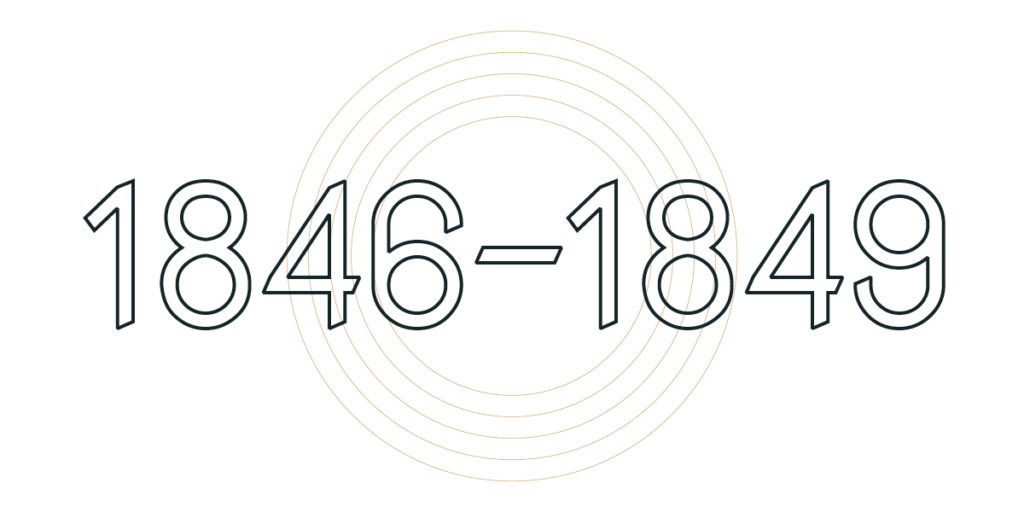
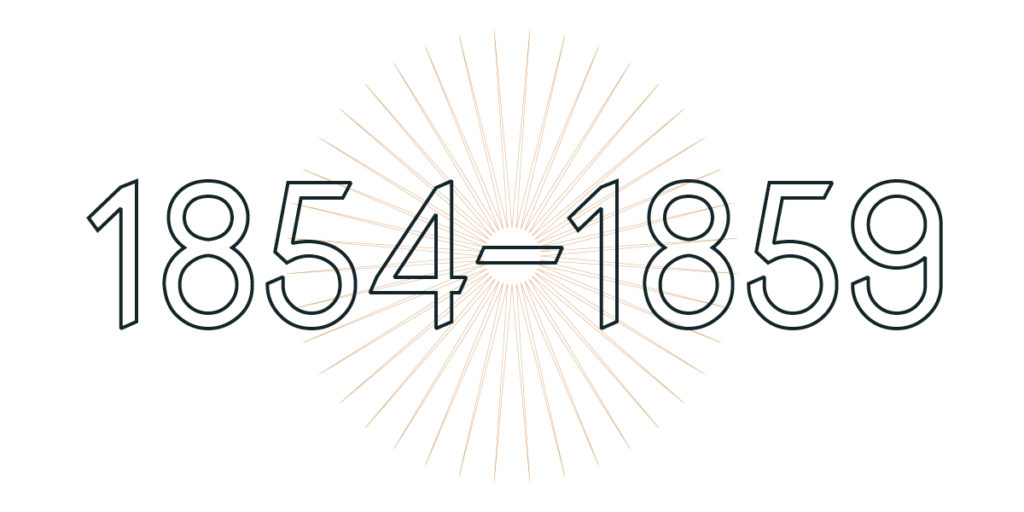
- Demand for locomotives returned and the efforts in finding new overseas markets started to provide results. One locomotive built by RS&Co in 1854 became New South Wales Railway’s first locomotive. It still exists and can be seen at Sydney’s Powerhouse Museum.
- In 1855 RS&Co recorded the 1000th locomotive built by the Company since its inauguration in 1823.
- October 1859 – The passing of Robert Stephenson Robert had overseen the work of RS&Co for 36 years from its inception in 1823 to his death on 12 October 1859, a few days before his 56 th birthday. His loss was felt by the employees and the nation, the level of his esteem being evident by burial in Westminster Abbey at the side of Thomas Telford. They are still the only engineers laid to rest in the Abbey. It is reported that in Newcastle on the day of the funeral the ships on the river carried their flags at half-mast; offices, shops and banks closed at noon, and the workers from RS&Co more than 1500 strong marched to St Nicholas’ Church and attended divine service. This mark of respect was paid by the men spontaneously.
- In 1886 the firm registered as a private limited-liability company of which George Robert (Robert Stephenson’s cousin) became Chairman. The main issue now was the cramped conditions and the uneconomic layout of the factory, limiting the ability to compete with other manufacturers who had spacious sites and new facilities. The Works at Newcastle had expanded to occupy all available land at South Street and could expand no more.
- RS&Co as a private company was wound up in 1899 and a new public limited company formed, Robert Stephenson and Company Limited and George Robert retired from the Board of Directors, ending the Stephenson family management of the business. One of the first decisions for the new Board was to find more suitable accommodation and invest in modern production equipment to give the company a viable future. In 1902, new works were built at Darlington and locomotive production commenced there in 1901-2.
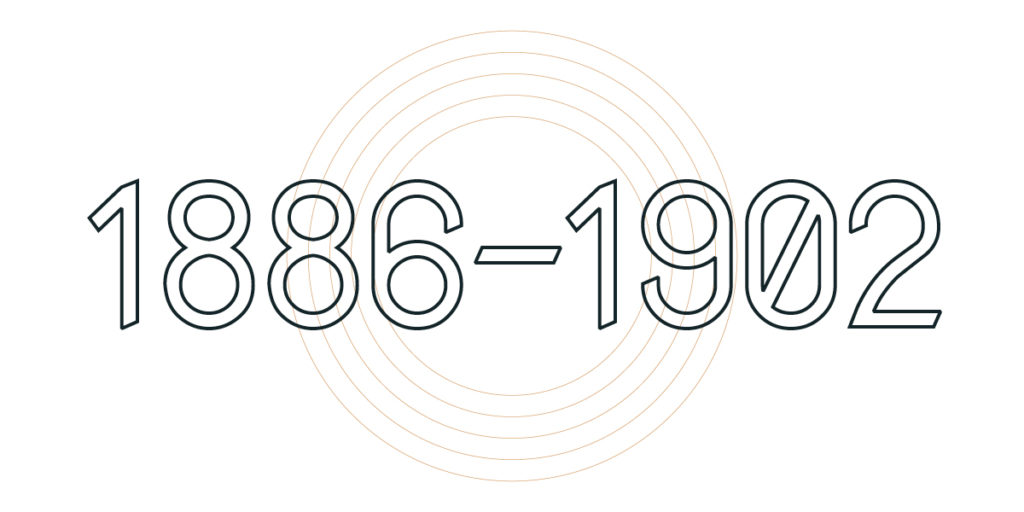
Produced with thanks to Hugh Fenwick, Vice-Chair, Robert Stephenson Trust and the McDowell Trust

